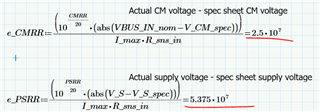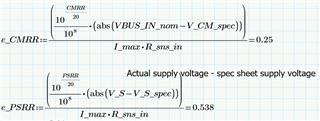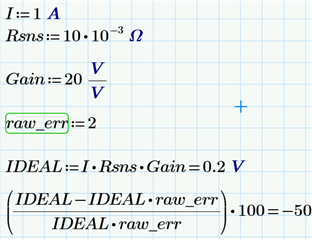Tool/software:
Hello-
I am using the -S and -T versions of the LMP8481 current sense amplifier.
I am using TI's "Current Sense Amplifier Comparison and Error Calculator" https://www.ti.com/tool/CS-AMPLIFIER-ERROR-TOOL spreadsheet and I have some questions.
1) I do not understand how the e_CMRR and e_PSRR are calculated; there is some magic that happens to convert the CMRR and PSRR from dB to uV/V that I am not following.
2) This current sense amplifier feeds into an ADC in my circuit. How would I go about computing the total error in the sensed current; taking into account ADC sources of error?
Thanks!
-M





 Vbusin-Vcm = 60
Vbusin-Vcm = 60 Vs-Vs_spec = 43
Vs-Vs_spec = 43
